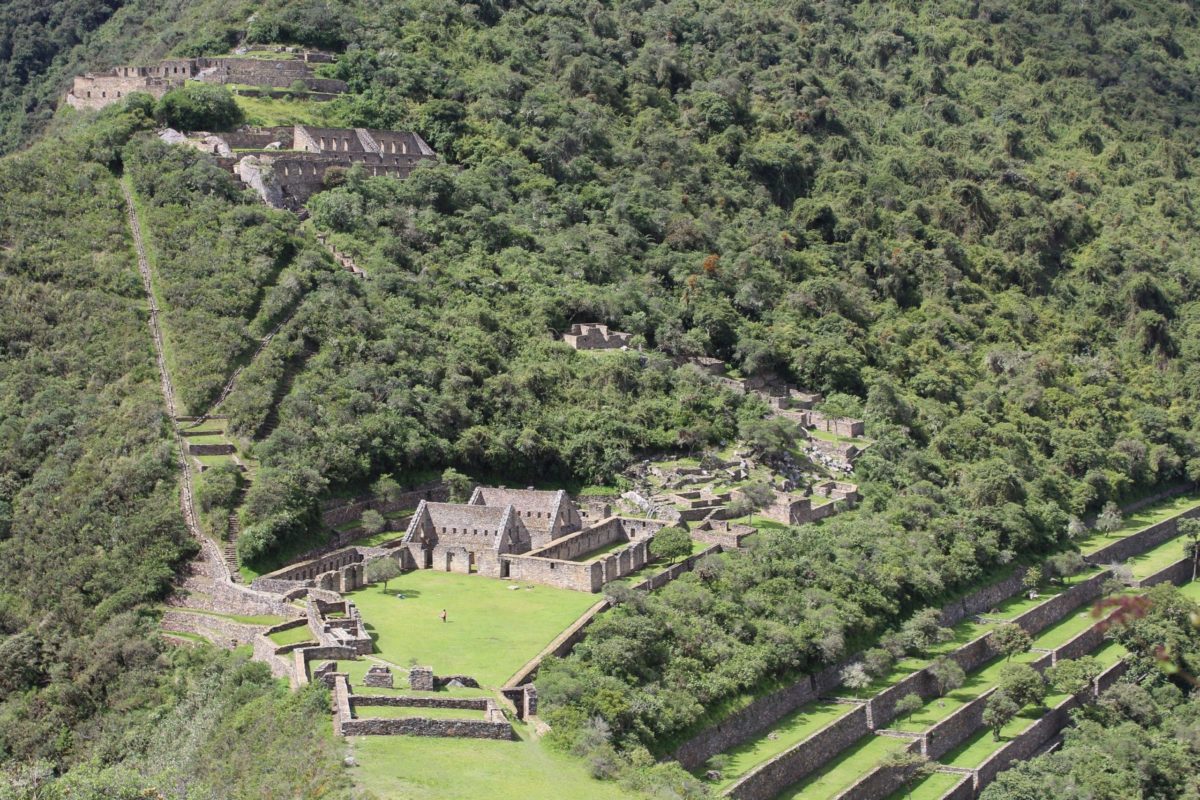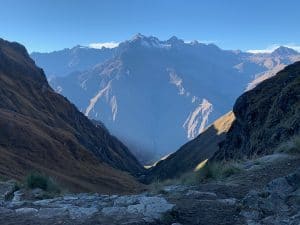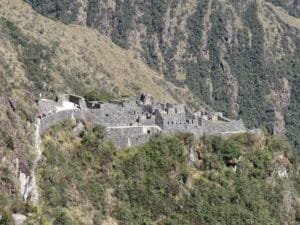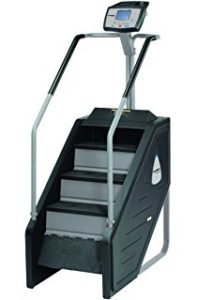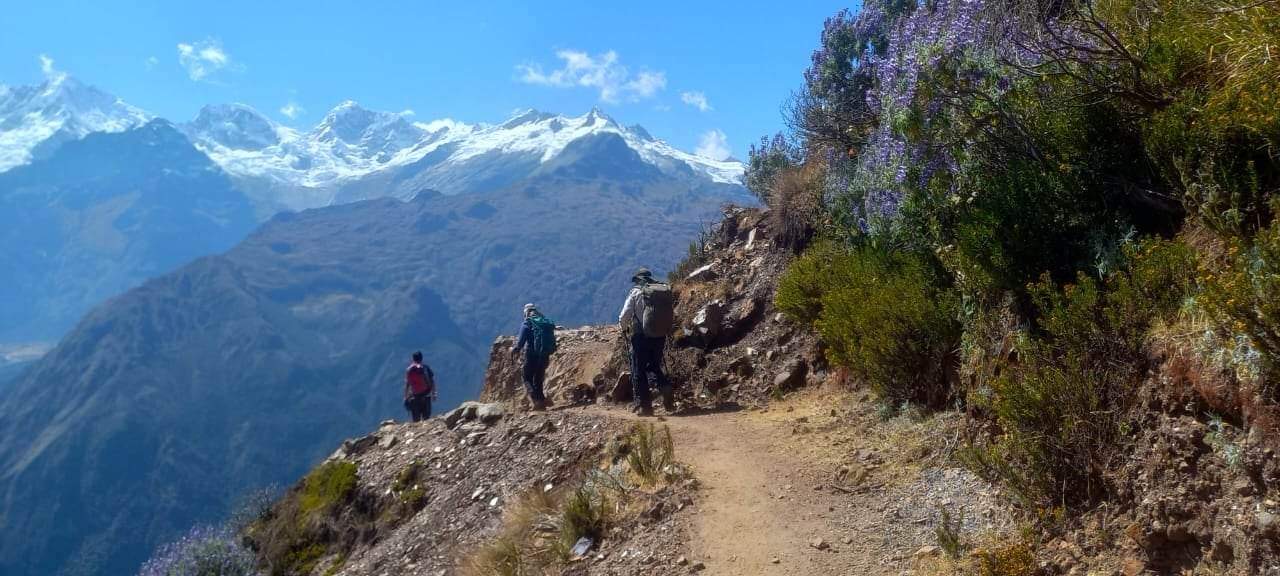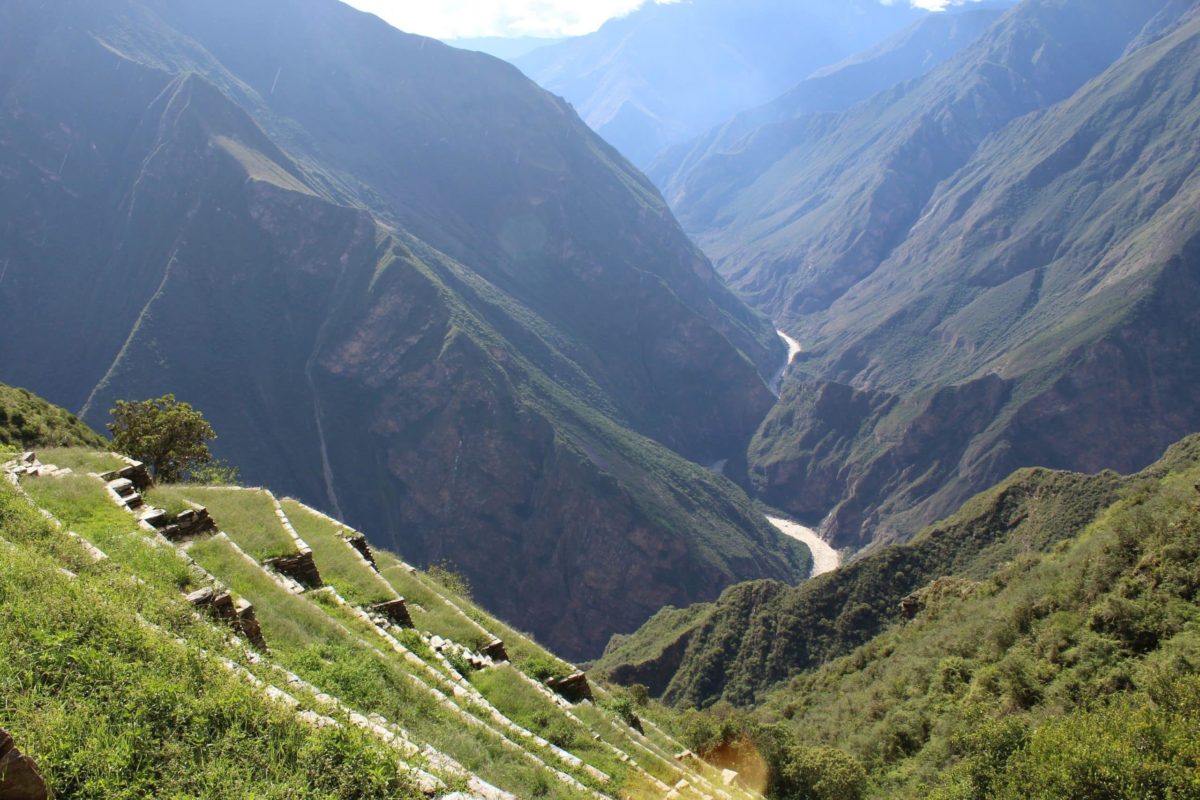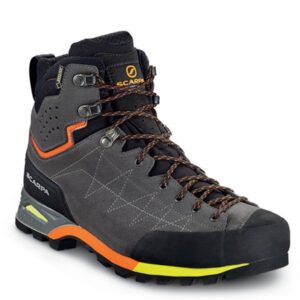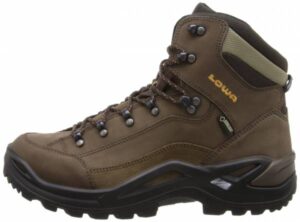Choquequirao Trek to Machu Picchu
On the second day of the trek you will arrive at the world famous Choquequirao Archeological site at 3,110m/ 10,120 feet. The Choquequirao site is an Incan site in southern Peru, similar in structure and architecture to Machu Picchu. The ruins are buildings and terraces at levels above and below Sunch’u Pata, the truncated hill top.
The Choquequirao Trek to Machu Picchu is a 15th and 16th century settlement associated with the Incan Empire. The site had two major growth stages. Choquequirao is located in the area considered to be Pachacuti’s estate; which includes the areas around the rivers Amaybamba, Urabamba,Vilcabamba, Victos and Apurimac. This Incan treasure should be on your list of Inca sites to visit while you are in Peru.
Tips & Advice
Everything you Need to Know
We have added some useful links below that will aid in your planning and preparation for your trek along the Inca Trail to Machu Picchu. We have successfully led hundreds of people through these majestic mountains. Therefore, hopefully this will aid in your preparation for the trip as well! Why not CALL US and find out everything you need for your specific trek.
1). Extremely IMPORTANT INFORMATION about Inca Trail permits.
2). Pick the best itinerary for your Inca Trail trek to Machu Picchu
3). Get training and learn the best way to prepare for your Inca Trail trek to Machu Picchu
4). Get FREE constant advice from our professional team
5). Understand the daily distance on the way up and down the Inca Trail Trek to Machu Picchu
6). Have the right clothing and gear for your Inca Trail Trek to Machu Picchu
7). Pacing each day on the trail is critical to success on the Inca Trail
8). Why being hydrated is critical at high altitude and in low oxygen environments
9). Elevation gains on the Inca Trail Trek to Machu Picchu. This will help you formulate a training plan
10). What sort of food will I get on your Inca Trail Trek to Machu Picchu
11). Read our Top 10 Tips for a successful Inca Trail Trek to Machu Picchu
12). Read our Top 10 Tips for when you are on the Inca Trail Trek to Machu Picchu
13). Read about the best time to trek the Inca Trail to Machu Picchu
14). What vaccinations should you consider for your Inca Trail Trek to Machu Picchu
15). What type of trekking boots should you have for your Inca Trail Trek to Machu Picchu
16). What Insurance do I need for your Inca Trail Trek to Machu Picchu
17). What additional expenses will you incur on the Inca Trail Trek to Machu Picchu
18). Here are 20 reasons to Pick us for your Machu Picchu Trek
19). Here is some additional training advice for going downhill
1). Picking the Right Itinerary is Critical
We highly recommend the 5 day classic itinerary. With new restrictions in the city of Machu Picchu, anyone entering the city is limited to just two hours. The 5 day itinerary gives you more time on the trail to experience every site along the way. This itinerary also gives you two visits to the city of Machu Picchu. We walk in through the famous Sun Gate in the late afternoon on the 4th day. This itinerary sleeps in the best locations on the trail with less people around you. You get to spend more time in Winyawayna, before having a beautiful lunch and then walking in to Machu Picchu.
Our 5 day itinerary also includes a night sleeping in the beautiful town of Aguas Calientes. After a well deserved shower, we will treat you to dinner in Indi Feliz to celebrate your success. The next morning, we will go back up to Machu Picchu for our second visit. On this day we will explore the ruins and do a full guided tour.
2). Make Sure you have the Correct and Specific Training
Trekking the Inca trail to Machu Picchu is a 26 mile trek over 4 days of walking. You will be starting at 2,800m/ 9,186 feet, trekking up to 4,215m/ 13,829 feet and ending back down at 2,450m/ 8,038 feet. This trek should not be taken lightly. You will trek over a number of passes, steep ascents and descents, and thousands of rocky, uneven steps. Therefore, if you have not put in the training beforehand, you will definitely struggle on this uneven trail. Putting in at least four days a week training is essential. Walking in the hills, rocky terrain or just up and down steps, will give you the best chance of enjoying your journey.
You do not want to just endure the Inca Trail, you want to enjoy it! If you are signing up to one of our trips, we are happy to help you with your training and set personal training plans.
3). Break in your Trekking Boots Before the Trip
Make sure that you get the right boots and break them in. Having the right boots are an absolute must on this trek! You will be wearing these boots day in and out, along the extremely uneven and rocky trail. Do not arrive to the Inca Trail with a new pair of boots that you have not taken the time to break in. This could make for a long and uncomfortable trek! Make sure that you have a pair of boots that you have worn in the elements and broken in on trails. A good amount of ankle support is also a must. Make sure that your boots are waterproof, as you are likely to encounter moisture, either in the form of rain, snow or both on the trail. READ MORE.
4). Have all the Right Clothing and Gear
We want to make sure that all of our clients have the right gear, especially your waterproofs. The gear you bring with you on the trek can be the difference to your enjoyment levels on the trail. There are a few bits of gear that are essential in order to set yourself up for success: your waterproofs and layers. It is almost a guarantee that you will encounter rain on the trail, no matter what time of year you go. Therefore, you need to be prepared for all weather. Having a good waterproof jacket and pants will mean that you do not have to spend the 4 days on the trail wet and cold, which can definitely make or break your trip!
Another part of gear that I would suggest you focus on is your layering system. The temperatures on the trail can sometimes drop below freezing. And other times it is quite warm. This means that you will need the right layers as well as a warm down jacket. I like to focus on wearing Merino Wool base-layers, however, they are quite expensive. Therefore, if you don’t want to spend the money on wool, I would stick with a good synthetic fabric. Do not show up on a trip with cotton layers as they will not dry quickly or help with regulating body temperatures. You will always want to have a good down jacket as well to put on in the mornings and evenings, when the temps drop! If you need more information on what gear to choose, please feel free to get in touch.
5). Book Far in Advance to Avoid Disappointment
The Inca Trail is regulated by the government of Peru and therefore strict regulationshave been put in place. The trail only allows for 500 people per day to be on it, including all porters/guides/cooks and tourists. This can limit your chance of being able to book a trek, unless you plan far in advance. You have to book your place on a trek no later than 6 months before you plan to travel, in order to get your spot booked. If you arrive in Cusco with plans on going on the Inca Trail, without having booked prior, you will likely be disappointed. There are however many other treks into Machu Picchu that you can take. However, if you want to be on the actual Inca Trail, you must book in advance!
6). Pick The Best Month for your Trek
Pick your dates to best suit your desires. While you can hike on the Inca Trail year-round, there are definitely months in the year that have more suitable weather to take your journey than others. The months of May through September generally give you the best chance of being on the trail with the least amount of rainfall. Most likely you will always see precipitation on the trail, no matter what time of year it is, however if you go during the months of May – September, the chance of rainfall is lower than at other times.
7). Arrive in to Cusco Early for Additional Acclimatization
The beautiful town of Cusco, Peru sits at 3,400m/ 11,152 feet above sea level. If you are flying in from sea level, this is quite a large jump to take. You may feel the lack of oxygen and possibly even signs of altitude sickness on your arrival. It is not a good plan to start the Inca Trail after only one night sleep in Cusco. If time allows, you should sleep at least two nights in Cusco. This will give yourself that much needed time to acclimatize.
All of our trips on the Inca Trail include two nights in Cusco at the start of the trip. Also, we will take one day to do a full day tour of the Sacred Valley to aid in your acclimatization process. The start of the Inca trail is actually at a lower altitude than Cusco, so if you give yourself that much needed time in the City, you will definitely feel the benefit when you start hiking. There is also plenty of things to see and do in the city to spend the extra time!
8). Hydration is Critical
Drink, Drink, Drink. Water is your best friend at altitude! Keeping yourself hydrated at altitude is extremely important. Your body dehydrates much quicker at altitude. Therefore, you need to replenish your fluids and drink a lot more water than you may do back home. I always try and drink anywhere from 4 to 5 liters a day when at altitude. If your follow this rule, you will combat altitude sickness and keep yourself feeling good throughout the trip!
9). Be Prepared for the Outdoors
The Inca Trail to Machu Picchu is one of the World’s most beautiful and well-traveled trails. It is accessible to most people out there who are avid walkers/hikers, however, it is still the outdoors and you have to be prepared. Not only do you have to deal with the difficulty of hiking and the weather on the trail, you need to prepared to have to live in the outdoors for 4 nights. This means that you will be walking, sleeping, eating, and going to the bathroom in the wilderness. Therefore, you need to be comfortable with all of these things.
Our trips carry our own toilets with us on the trail for your comfort. Likewise, there are some toilet facilities in the campsites for use, but along the trail, you will need to use the great outdoors as your facility! Always remember to carry a small bottle of hand sanitizer so that you can keep bacteria off your hands. You also want to make sure you have the right vaccinations for your Inca Trail trek to Machu Picchu.
10). Pacing Yourself on the Trail
One of the biggest mistakes people make while on an altitude trekking trip is to over exert on the trail. You don’t want to be in a position that you are out of breath and fatiguing your muscles when trekking. Likewise, you want to avoid having a high heart rate while walking on the trail. You need to keep the pace at a slow and controlled speed to make sure that these things don’t happen. If you feel that your guide is going too fast, then slow down and take it at the speed you need to be comfortable. It is not a race to the finish line!
1). Manage Your Heart Rate
Pacing, heart rates and attention to breathing are all super important as you come up hill over the 3 passes. This is especially important on the Dead Women’s Pass, up to 4,215m/ 13,829 feet. In the more challenging areas and days, you will walking up and down steep steps, so holding a slow, controlled pace will be critical to your recovery and your ability to complete this journey in a safe manor. You also need to come in excellent physical conditioning for this trek. We want you to enjoy and experience all the Inca sites along the trail. Focus on deep breathing, in through your nose and out through your mouth. Your goal should be to keep your heart rate as low as possible at all times on the trail.
2). Be Aware of Your Surroundings
Keep a close eye on your surroundings. There are lots of porters rushing past you on the trail, therefore you need to stay on the mountain side of trail so you do not get knocked off. If you see porters coming, do make your teammates aware so they can safely move to the mountain side of the trail as well. This is especially important on the way down the steep steps that the Inca trail presents. They are steeper than you think so you do need to manage your own safety on the trail. Your personal safety needs to be your main concern at all times on the trail.
3). Stay Away From any Drop-off Areas
Always stay on the mountain side of the trail. With high drops offs and risky uneven trails, you always need to be aware of your foot placement and stay away from the edge of the trail. There are a very few railings on the trail. Therefore, you need to stay on the mountain side of the trail. Stay well away from drop offs at all times. There are some very steep steps downhill sections and you need to stay well away from drops offs and manage each foot placement.
4). Treat all Cold Water on the Trail
Make sure you treat all cold water throughout the trek. On all Ian Taylor Trekking Inca Trail treks we boil all the water. However, you do not want to get sick from untreated water. If you get served cold water in your bottle on the trail, you MUST treat the water with water purification tablets before you drink it. Drinking dirty water will ruin your trip. You can not buy bottled water on the Inca Trail to Machu Picchu. If you are given hot water for tea, coffee or in your bottle, then it is fine to drink without tablets. Make sure you manage your personal hygiene each day on the trail. This can make or break your trek.
6). Acclimatize in Cusco
Exercise is an important part of the acclimatization process. Coming into Cusco early and walking around the town and surrounding hills is very important. Exercise is important but you do not want to fatigue your muscles by pushing high heart rates. Once you have come prepared and trained, this should not be a concern. We include two nights in the hotel in Cusco before each of our Inca Trail trips.
On the trail, you will be walking 8 hours back to back, with 30% to 40% less oxygen than your body would be used to having at sea level. This will put your muscles, heart and body under a lot of pressure. You do not want to be moving fast up the trail each day. Our pace will be slow and steady, with plenty of breaks, especially on the longer hills. You need to regulate your heart rate, as you hit every uphill along the Inca Trail.
7). Hydration, hydration, hydration
The dry climate and low oxygen level require you to be drinking 4 – 5 liters of water each day. There is NO exception to this rule! Hydration is critical for body to function correctly at altitude. The International Society for mountain medicine defines high altitude as between 1,524m/ 5,000 feet and 3,500m/ 11,500 feet, very high altitude as between 3,500m/ 11,500 feet and 5,486m/ 18,000 feet, and extreme altitude as any height above that. The higher you go, the greater the effects are on your body and the more important it is to stay hydrated.
We dehydrate much faster at high altitude. When you fail to stay hydrated, you run the risk of altitude sickness and ultimately ruining your trek. You may not realize how much water you are losing through exertion, but the lower oxygen levels make you breathe in and out faster and more deeply, consequently, losing more water through respiration. According to the wilderness medical society, you lose water through respiration at high altitude twice as quickly as you do at sea level. High altitude can also make you need to urinate more often and can blunt your thirst response, putting you at even greater risk of dehydration.
8). Do not Ignore the Signs of AMS
Do not ignore the signs of AMS, or Acute Mountain Sickness. Our Inca Trail Treks have quality acclimatization in Cusco. It is extremely important to sleep at 3,400m/ 11,152 feet, for two nights before the trek. You need to be able to manage your ascent safely and never be afraid to let your guide know how you feel. Altitude sickness can kill, so respect the mountains and respect the decisions our guides make. Our guides are trained to deal with altitude sickness so let them help. We carry oxygen on all our treks. Once you get sick it will only get better by going to lower altitude as quickly as possible.
9). Stay Together at all Times
You are trekking as a team, not individuals. You need to look out for yourself and other people around you on your trek. Team work is essential for safe group travel. Look out for each other, and you will enjoy the journey a lot more. If people cannot keep our minimum pace they should be turned around before they become a risk to themselves and the team. Please let the guides know if a team member is feeling unwell.
10). Have the Right Gear
Have the right clothing, gear and equipment. There are too many people on the trail with cotton clothing, poor quality trekking boots, small insufficient day packs, and the wrong clothing with minimal water. Do not compromise on trekking boots, back packs, water proof gear, air mattress or sleeping bags. Check out our PACKING VIDEO. If you are signed up to an Ian Taylor Trekking trip, we will provide you with an itemized kit list in our 35 page dossier.
Preparation & Training
The trek to Machu Picchu on the Inca Trail will be one of the highlights of any trekkers career and an incredible adventure. Although the Inca Trail is accessible to most relatively fit individuals, you definitely want to make sure that you are putting in the right training and preparation to make your journey a safe and successful one.
One thing to remember about the Inca Trail is that is heavily consists of stairs, going both up and down. This can be one of the most challenging parts of the trek and something that you want to make sure you are prepared for. Depending on what itinerary you choose to do will also play into how much training/preparations you need to do.
1. Steps, Steps and More Steps
Thousands and thousands of steep challenging steps up and down will likely be the most testing part of the trip. And for most, the way down will be the hardest. Throughout the trail, you have to go over three high passes. From the third pass, at 3,670m/ 12,041 feet, you will have to get down to the final camp site at Winay Wayna, which is at 2,700m/ 8,858 feet. So, on that day alone, you will be dropping down 3,183 feet on a steep descent. On another day, you will be walking up 1,115m/ to the highest altitude at 4,215m/ 13,828 feet, then dropping down 715m/ 2,346 feet in one day. This is tough on the knees, Calves and quads, especially when you also will be carrying your backpack with approximately 5kg – 10kg/ 11lbs – 22lbs.
You must come prepared for this amount of altitude gained and lost each day for your enjoyment, safety, success and the safety of the others around you.
2. Long Days on the Trail
No matter what itinerary you choose to take, the Traditional 4 Day, Classic 5 Day, or the Salkantay 6 Day trek, you will have some very long and difficult days of trekking ahead. The highest point on the Traditional 4 Day or the Classic 5 Day is at 4,215m/ 13,776 feet at the pass of Wanusca (Dead Woman’s Pass). On the Salkantay 6 Day option, you will reach the high point of the Incachiriasca Pass at 4,850m/ 15,912 feet. In order to safely and successfully reach those high points, it is imperative that you take it slow and steady and have the right physical preparations in place. Trekking at altitude needs to be managed correctly. Speak to us about how to train and prepare.
Once you have reached the high points on the trail, either on the second or third day of the trek (depending on which itinerary you chose), is not the end of your up-hill on the trail, nor does it mean the hard part is over. Dropping down on steep inclines as well as more added up-hill travel on the trail, after the body is already fatigued is something you want to be ready for. Make sure that you have done the correct training. Training with your weighted backpack on, going up and down hills and stairs will be paramount to your success.
3. How Should you be Training
You should aim to train 4/5 times a week in preparation for your Inca Trail Trek to Machu Picchu. However it is hard to give a one size fits all for your training plan. Everyone is starting in a different place and has different levels of access. So your training program will depend on a wide range of factors. We recommend getting a fitness test, before you start the training, so you know you max heart rate and training zones. Most of your training should be done at lower heart rate levels in the aerobic zone. You also need to start will less time and less weight in your back pack, and work your way up. Your goal should be to build, endurance, leg strength, overall body strength, balance and lung capacity.
The most important factors for your trip will be to build strength and endurance. The strength is needed to carry your body up and down the hills. The endurance training is needed so that you can perform for 4 – 6 days in a row. The key training you can do is walking up and down hills and stairs, with a weighted back pack, building from 5kg to 10kg. This activity will stress your legs and build strength prior to your trek. If you do not have access to hills/stairs for training, you should use a stair master, building up to 1 hour 30 minutes per day with a weighted backpack on. Both of these ways will help you build the specific leg strength to get up and down these hills safely. Lunges and squats should also be key elements of your training. Contact us for further information.
4. Where Should you Start
Contact our team of professionals. Ian has trekked the famous Inca Trail to Machu Picchu over 15 times and our office has a combined 25 times on the trail! We are your best resource for the trip, and want to help you get the best information. You want to enjoy the journey on the Inca Trail. Therefore, you need to make sure you pick the right itinerary and team to get you there! Read our Top 10 Tips on the trail, and sign up to one of our many treks to the incredible city of Machu Picchu.
Join us Today!
We have the best option for you on your journey to Machu Picchu! You can join 4, 5 or 6 day itineraries to suit your specific needs. Not only are you going to experience stunning scenery and great trekking, you will also learn along the way. Experience the history, culture and beauty of the Incan People with our team! Machu Picchu is a truly unique place and experience and we hope that you will join us there soon! CONTACT US!
Daily Distances
Day 1
Arrive in Cusco, Peru where you will be picked up from the airport and transferred to a comfortable hotel. You are free to do some sight seeing in this unique and magical city. After you have settled in at your hotel go out and tour the City of Cusco. The afternoon is free to rest, acclimatize, and sight see around Cusco. However, we strongly urge you to take it easy, go for a walk and drink plenty of water, as Cusco sits at 3,400m/ 11,152 feet above sea level and you are at high altitude with 30% less oxygen than sea level. You will need to stay well hydrated.
Day 2
It is important to spend two night in Cusco before the trek so we include a full day private sacred valley tour including: Chinchero remains and learn more about local living and culture. We will also visit the amazing Ollantaytambo remains. The Chinchero and Ollantaytambo remains are very special experiences in themselves, along with mixing with the culture, this day will live long in the memory. This day also gives your body a chance to acclimatize to the lower levels of oxygen. After a long way you will return to your hotel in Cusco. The day your will start at 8am and finish at 5pm.
Day 3
Today we leave Cusco at 6am after breakfast. We will head out in a private van for a 4 hour drive to Capuliyoc, situated on the edge of the Apurimac Canyon and surrounded by impressive snow capped peaks. We will then hike down for 2 hours until we arrive at Chikiska where we have lunch. Afterwards we continue our hike for 1 more hour to Playa Rosalinas 1,550m/ 5,084 feet, where we will spend the night. We will be camping through the whole trek. Today’s hike is 7.5 miles/ 12 km.
Day 4
We will be departing early in the morning, we ascend to Santa Rosa and to Maranpata where we will have lunch. The climb from the river takes about 4 hours and is tough. From our lunch spot we can see the remains of Choquequirao. Then we have 2 more hours of hiking to reach the Choquequirao Archeological site at 3,110m/ 10,120 feet. We spend the evening there and get to watch the sunset and some condors flying. The distance on the today’s hike will be 8 miles/ 13 km.
Day 5
After breakfast it is possible to explore more of the Choquequirao Archeological site and have a little rest before lunch. In the afternoon we will climb over a ridge and hike to the remains of Pinchinuyoc where we will camp for the night. (2 hours of hiking down) This is definately the easiest day of the whole trip. We will hike 6.2 miles/ 10 Kilometers today.
Day 6
After a delicious breakfast, we hike down hill for 2 hours and arrive at the canyon of the Rio Blanco 1,990m/ 6,527 feet where we have a rest before starting a difficult climb up our campsite of Maizal. The hike will be 3 – 4 hours long and 6.2 miles/ 10 km
Day 7
We leave at 7am, and walk uphill for about 3 hours through a jungle towards the Victoria mines. We will visit them as well as some Inca ruins before climbing 1 hour more to the pass of Victoria 4,130m/ 13,546 feet. There are spectacular views from the pass as we descend to the charming village of Yanama(about 2 hours walking) following a section with some well constructed Inca Steps. Once we get to Yanama, we take the local transport all the way to Lucmabamba. Along the way, we get to enjoy the gorgeous views of snow capped mountains and waterfalls. We will hike 7.5 miles/ 12 km today.
Day 8
On this day we walk for 3 hours by the original Inca trail and through the cloud forest to the Puncuyoc pass then onto Llactapata Inca remains, an Inca site 2,700m/8,907 feet, which is located straight in front of the Citadel of Machu Picchu. Once there, we enjoy the unique perspective of Machu Picchu from far away. Then we hike downhill for 2 hours to the hydroelectric plant where we have lunch. We continue to walk to Aguas Calientes through the National Sanctuary of Machu Picchu, enjoying the surroundings of the iconic Machu Picchu and the wall which surrounds the Inca Citadel. This is an 11.2 mile/ 18 km hike today.
Day 9
We will have breakfast at 5am and take the first bus to Machu Picchu, just in time for sunrise. It will take half an hour to reach the Machu Picchu archeological site, one of the 7 wonders of the world and UNESCO world cultural Heritage site: an unforgettable experience you will never forget. Your guide will expertly direct you through the astounding vestiges and its main streets. After the guided tour, you will have some free time to wander around the lost city of the Inca’s and immerse yourself in this magnificent place. You can also climb Huayna Picchu and appreciate the beauty and magnificence of Machu Picchu from this mighty summit. There is also the option to climb Machu Picchu mountain from there, walk to the sun gate or Inti Punku or visit the new local museum or the hot springs in Aguas Calientes later in the day. When you are done in Machu Picchu you can descend to Aguas Calientes, enjoy a leisurely lunch, and at 4:22pm you will board the train for your return trip to Cusco. Aiming to be back by 9pm.
Day 10
You will be picked up from your hotel in Cusco depending on your flight time. Usually 3 hours before your scheduled flight time. We will drive you back to the airport in order to take your flight or onward journey. There are options to join a tour to the Amazon, lake Titicaca and other treasures Peru has to offer.
Equipment
If you are joining one of our treks to Machu Picchu, then we will send you a 35 page Dossier with all the information you need to know about the trek. This will include a complete kit list, with examples of all the gear that you will need for your trip. However, here is the gear and clothing you should consider packing for Your Inca Trail Trek to Machu Picchu.
The Best Months for Trekking to Machu Picchu
The best months for trekking to Machu Picchu will be April to October. We are big fans of trekking in May, June and July. However, any month in the predominately dry season will work for trekking to Machu Picchu. It can be hard to secure permits in these busier months, so make sure you book early. READ MORE.
1). La Sportiva TXS GTX
This is a new boot from La Sportiva, that has replaced our beloved Trango Trek GTX. We prefer a more rigid sole under foot and these boots do a great job. They breathe well, are lightweight and waterproof. Some of our Sherpa and Kilimanjaro guides wear these boots as well. Ian used these boots on four Kilimanjaro climbs this year along with three Everest Base Camp trips, and they are still in great condition for the same again next year. This boot would be a great option for your trek to Machu Picchu!
2). Scarpa Zodiac Plus GTX
Scarpa has come out with a new lighterweight option in the Zodiac. These boots are Gore-Tex, so a waterproof boot to keep you dry if you experience moisture on the trail. They also have good ankle support and lacing system. These boots, similar to the La Sportiva TXS, have a more rigid sole. This is ideal for the stairs you will encounter on the Inca Trail. Scarpa are always re-inventing trekking boots and if they fit your foot correctly, then they may be the right boot for you. They work great and last a long time. Also, if you decide on more challenging trails after the Inca Trail, we would also recommend these boots for a Kilimanjaro climb, Elbrus or Everest Base Camp.
3). Lowa Renegade GTX Mid
The Lowa Renegade GTX Mid boot has been around for a long time and worn by many trekkers around the world! These are a perfect boot for the Inca Trail. They are waterproof, have good ankle support, and also have a semi-rigid sole. The grip of these boots and the more rigid sole is ideal for the many stairs on the Inca Trail. The negative of these boots is that they do have a lot of stitching on them, making them more susceptible to wearing out faster than other options. However, if you treat this boot well, you could wear this option for a trek to Annapurna Base Camp as well!
4). Merrell Moab Mid 2 Waterproof
The Merrell Moab Mid 2 Waterproof Trekking Boot has been around for years and there is a good reason for that, they are a great boot! These boots boast a waterproof membrane, good ankle support, comfortable and sturdy fit. The Merrell boot may be the option for you if you have a slightly wider foot or need more room in your toe box. This boot is a reliable and durable option that will be ideal for your Inca Trail trek! We would also recommend this boot for Kilimanjaro, Annapurna Base Camp or Everest Base Camp.
5). Salewa Mountain Trainer Mid GTX
Salewa has been coming out with a lot of new and very high quality boots over the past few years. While we have not personally worn this boot yet, however, we do have a lot of clients wearing these boots on the Inca Trail. We have had very good feedback on this option! They have Gore-Tex in the boot, so they are waterproof and also have a good amount of ankle support. This lightweight, but durable boot would be a great option for your trek to Macchu Picchu.
The Best Trekking Boots for your Inca Trail Trek to Machu Picchu
All of the boots that we have mentioned above would suit for a wide range of trips! We do not want you to have to purchase one boot for one trip, so make sure you have an idea of what your trekking goals are for the future when purchasing your boots. All of these boots also come in Men’s or Women’s styles. Therefore, they should work for anyone coming on one of our Inca Trail treks!
For more information on our Inca Trail treks to Machu Picchu, GET IN TOUCH today! Read some REVIEWS.
FAQ
Q). Are we trekking on the main Inca Trail?
A). There are thousands of Inca Trails. If you want to trek the famous Inca trail that walks into Machu Picchu, you need to pick our classic Itinerary. Check out our classic 5 day itinerary for the trail that hikes into Machu Picchu.
Q). When is the best time to trek the Inca Trail?
A). You can trek most of the year. The best 7 months are April, May, June, July, August, September and October. You can also trek in November.
Q). Is there a dry season for the Inca Trail?
A). Yes, dry season is April through October. It can rain at any time of year on certain parts of the Inca Trail as you pass through a range of climates on this amazing trek.
Q). What hotels will be stay in?
A). We use the Novotel or Sonesta hotel in Cusco and we use the Typicala hotel in Aguas Calientes for our trips to Machu Picchu.
Q). What additional expenses will I incur for Inca trail treks?
A). The additional expenses you will incur on the Inca Trail will depend on a number of factors. It will vary greatly depending on your itinerary, inclusions and exclusions in your specific trip. However, for our Ian Taylor Trekking trips, these are some additional expenses you may incur while in Cusco and on your Inca Trail Trek to Machu Picchu.
Visa Entry to Peru: NONE
Meals and water in Cusco/ Ollantaytambo: $100 – $150 depending on restaurants
Tips given at the end of the trek: $200+ recommended for 4 or 5 day trek
Water on the trail: We boil all water for you. Some local people sell water and energy drinks on the first day of the trail. $20 if you choose to purchase
Toilets on the trail: Bring 10 soles
Internet: NONE (not available)
Battery Charging: NONE (not available)
Boiled water for your hot water bottle: No charge for this
Souvenirs: At your own discretion
Q). Where do I get water from on the Inca Trail?
A). If you are on an Inca Trail trek with Ian Taylor Trekking, you will not have to purchase any water during the trek. We recommend that you have water purification tablets with you on the trek to purify all water you drink. In the mornings, at lunch and in the evening, our staff will be able to fill your bottles or water bladders. Each time you are given cold water, however, you will need to treat that water with your purification tablets. We recommend that you are drinking 4 – 5 liters of water a day on the trail. There are also a couple of places that you can purchase water or soft drinks from people on the trail, if you choose. We do remind our clients to LEAVE NO TRACE on the Inca Trail and we do not recommend purchasing plastic bottles that likely will not be recycled.
Q). What is there to do in Cusco?
A). All of the Ian Taylor Trekking trips include two nights in a 4 start hotel in Cusco. Cusco is a beautiful and historic city that is filled with different things to do, from museums, historic sites, markets and shops, to the restaurants and bars. Eating in Cusco will be a highlight of your trip. It is a wonderful culinary city with a range of options for all budgets. You can enjoy small, local eateries for less than $5 a meal or you can eat at one of the delicious five star restaurants for $30 a meal.
Q). What is there to do in Aguas Calientes?
A). If you are on one of our Classic 5 Day Inca Trail trips to Machu Picchu, then you will be spending one night in a hotel in Aguas Calientes. This very unique and beautiful town will provide you with a hot shower, a bed to sleep in and a fun evening on the town. There is a wonderful market that you may visit with local artisans selling their goods. There are also bars, restaurants, shops and galleries throughout the town that you also will have an option to visit. We include dinner in Aguas Calientes.
Q). What will the food be like on the Inca Trail trek?
A). We only serve quality food on Inca Trail treks to Machu Picchu. Learn more. You can either fuel your body with premium or regular fuel and we chose to offer premium! Our trips offer a wide range of fruit, vegetables, meat and grains to give your body what it needs when exercising. On the trail, you will be served three course meals, three times a day. Our team can also accommodate your dietary requirements. If you are gluten free, vegetarian or follow other special diets, then we can make sure you have the food you need.
Q). What does a typical day of eating include on an Ian Taylor Trekking Inca Trail trek?
A). Breakfast: Cereal with Raisins, eggs, Honey, Jam with pancakes and fruit. We also serve Tea, Coffee Hot Chocolate or Milo
Lunch: Soup served with Garlic Bread. Rice, quinoa, pies, chicken, beef and vegetables, French fries, salad Fresh Fruit. We also serve Fruit Juice, Tea, Coffee Hot Chocolate or Milo
Afternoon Tea: Tea, Coffee Hot Chocolate or Milo Served with Biscuits and Popcorn
Dinner: Soup served with White or Brown Bread, Chicken, vegetable patty, served with Steamed Rice, mixed vegetables and regular vegetables. We also have Tea, Coffee Hot Chocolate or Milo and cake.
Q). What vaccinations do I need for an Inca Trail trek?
A). While there are no legally required vaccinations for entry or exit from Peru, there are however, some recommended ones. These include tetanus, hepatitis A, typhoid, hepatitis B, rabies, poliomyelitis, Tablets for malaria, tuberculosis and Covid-19. We suggest keeping up with the CDC or your local travel medical center to find out what vaccines are currently recommended for travel to Peru.
Q). How can I protect myself from bug bites in Peru?
A). While there are less bugs on the trail in June and July the best, but colder months. Bug spray is needed. Bugs like mosquitoes, ticks and fleas can spread numerous diseases in Peru. Many of these cannot be prevented from medication or vaccines, however you can protect yourself from bug bites in other ways. Wear long pants, shirts and a hat, in order to limit your amount of exposed skin. Use appropriate insect repellent, specifically with DEET in it. Use permethrin-treated clothing and gear (such as boots, pants, socks, and tents). However, do not use permethrin directly on skin.
Ready to go?
Does The Choquequirao trek on the Inca trail to Machu Picchu excite you to take the next step towards achieving your goals in the mountains? If so, get in touch today.
We pride ourselves on making sure that our clients have every opportunity to succeed on the mountains, including professional training advice, gear lists and video links on how to pack your bag, and much more. We are always available to answer any questions you may have by email or phone so contact us today!


